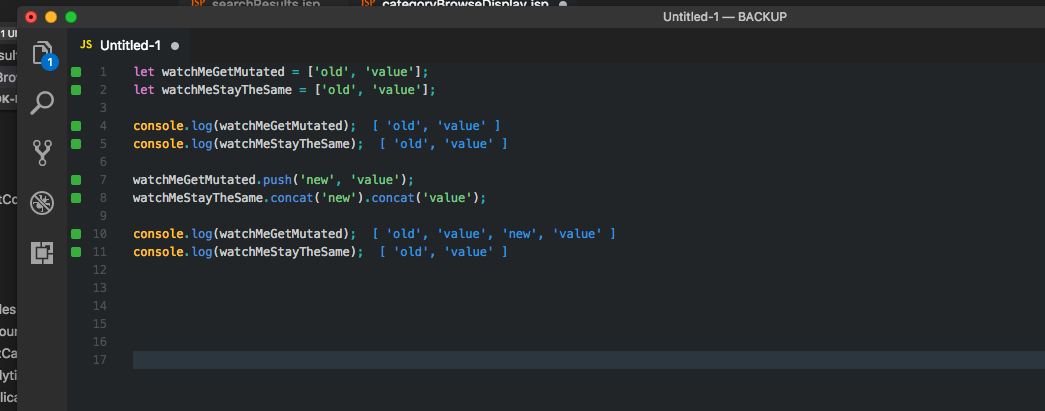Development Concepts: What is Immutability?

What is Immutability?
One of the concepts that is popular (and for good reason) is understanding and using immutability with your structures. There a few languages that enforce that (mostly functional programming) but most of the time you have the freedom to manipulate your structures however you want.
The idea of immutability is simple but seems complex. It is the concept of forcing you to create a copy of any structure you are using instead of manipulating the current one you are accessing.
Why Immutability?
The reason for this is actually very useful. In the case of our example in the image above, our variables are actually given a location in memory and any function that uses that variable and modifies it could cause you to get wrong data or unstable data. If two functions can manipulate the same data then there is no guarantee that you will get what you expect in either case. It makes it complicated to produce consistent results and track down bugs.
Pure Functions
A function that manipulates data outside of itself can be problematic like we talked about above. Most of the time when you talk about immutability it goes hand in hand with pure functions. These are functions that do not change anything outside of themselves. If you pass in a parameter it will not mutate it and instead with perform an operation and return a new structure leaving the original one the same.
If you are looking at Javascript then you have the option to use mutable and immutable methods as you wish. This is why sometimes people will say they are programming in a functional way with Javascript. It will allow you to use structures either way.
In the example above you can see two examples of methods on arrays that perform operations differently. You can see that push will simply mutate the array and add something to it. So if you had a function that expected watchMeGetMutated to have a length of 2 and then sometimes another function that performs this push operation on it executes before it and sometimes after it then you have no guarantee that it will return the value or perform the operations that you need. This can cause random difficult bugs.
The array method concat on the other hand does not mutate the array. As you can see the array watchMeStayTheSame does not change. All that concat does is take the array and return a copy with the new values added. So it keeps it pure. You could have multiple pure functions using watchMeStayTheSame in various times and they will always work the same. You could use concat on watchMeStayTheSame thirty different times and any functions using that array would not be impacted.
You can see in the image below that when I assign the value from watchMeStayTheSame to newArray that we get the copy that is made:

Using immutability is something you need to be mindful of and it is a key component of the Flux pattern which is used by Redux.
Sidenote: quokkaJS is the cool addon that is allowing for real time logging in the editor.
Look how far you've come. :)
I love seeing you continue your coding journey, Dayne. Good stuff, man.
Yep! Learning a ton and love it.
This stuff is super addictive!
A good tip!
Congratulations @daynewright! You have completed some achievement on Steemit and have been rewarded with new badge(s) :
Click on any badge to view your own Board of Honor on SteemitBoard.
For more information about SteemitBoard, click here
If you no longer want to receive notifications, reply to this comment with the word
STOP